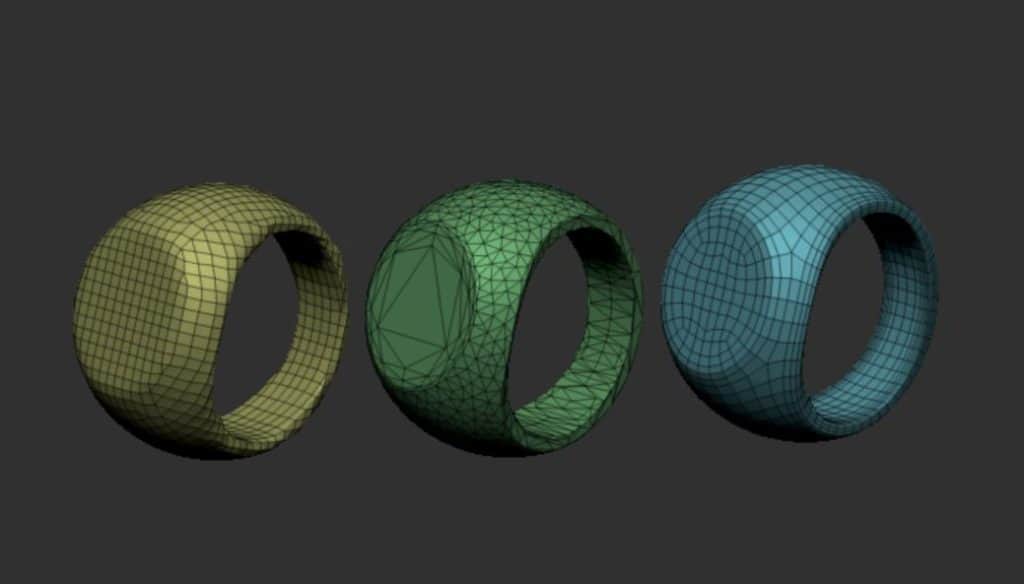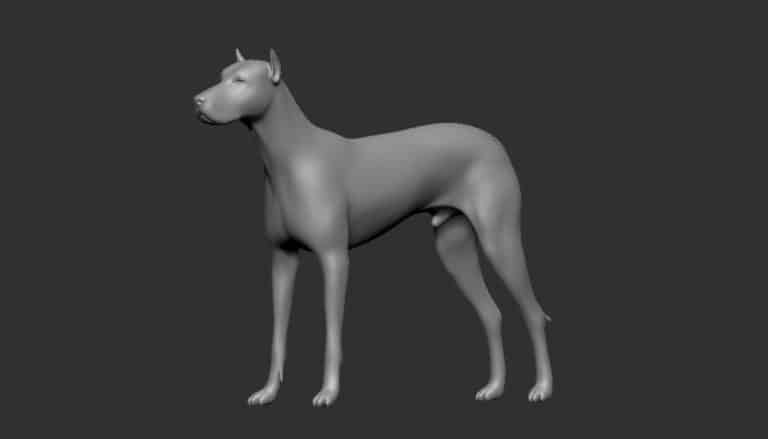Zbrush is a 3d modelling software used widely by professionals and hobbyists alike. Its most well known for its specialized ability to sculpt 3d models. Zbrush uses algorithms that generate millions polys without taxing the computer’s memory heavily.
While Zbrush is exceptional at 3d sculpting this is just the beginning of what it is capable of. Pixologic the makers of Zbrush are constantly adding to its ever expanding functionality.
It’s important to understand that Zbrush is a specialised 3d modelling software. While it is exceptional at 3d modelling it does not have the ability to animate and it has limited render capabilities. This means it can never replace all round software packages such as Blender or Maya.
In this article I hope to show you why so many people rely on Zbrush (Including Myself) for much of the 3d modelling Pipeline.
What is Zbrush
As I mentioned in my introduction Zbrush is primarily a specialised 3d modelling software. It is exceptional at 3d sculpting and this includes but not limited to retopology, UV’s, Texturing, Box Modelling and so much more.
Pixologic the creators of Zbrush first released Zbrush 1999 and since then have been constantly updating and adding to it. During this time it has had some major updates that have changed the way you can 3d model.
Because Zbrush is a tried and tested piece of software it has been widely accepted in the industry and is a standard piece of software many studios and professionals use.
Despite the sometimes difficult user interface Zbrush is easy to use and beginner friendly with little prior 3d knowledge necessary.
Advantages of Zbrush
Sculpting
let’s start with the most obvious and that is its ability to sculpt with millions of polys with little to no deterioration of computer speed. There is no other way to explain how this is done except to say it is magic.
No other program that I have used comes even close to having the same performance and toolset Zbrush does. Zbrush ships with hundreds of brushes with the added functionality of custom made brushes.
In the 2018 release of Zbrush they integrated the Sculptris algorithm into Zbrush itself. Up until this point Sculptris was a stand alone free program Pixologic offered. Sculptris subdvides the mesh based on the brush size, this has meant you no longer need to ensure you had enough topology to sculpt fine detail.
Up until this point you had to rely on subdivision levels or a function called Dynamesh which retopologized your mesh based on a dictated resolution. These functions are still useful but Sculptris has only added to Zbrushes solid sculpting algorithm.
Retopologizing
Zbrush comes with many ways to retopologize your mesh including both automatic and manual functions.
Of the automatic options ZRemesher is worth a specific mention. Pixologic are working hard to improve this algorithm and have updated it regularly over the past few years. While it still cannot compare to manually retopologizing yourself (which you can do in Zbrush) it still does a solid job particularly when it comes to hard surface objects.
If you would like to read up more on retopology in Zbrush please read this article I created which outlines 5 ways you can retopologize in Zbrush.

Hard Surface Modelling
Many people focus on the sculpting ability of Zbrush which generally means its great for organic modelling, however Zbrush is very much capable of hard surface modelling.
Particularly of note is the ZModeller Brush. This brush is amazing and is an essential Box Modelling tool in my opinion. It gives you full control of the topology of your model along with functionality that other programs don’t offer. It is a hard brush to get the hang of but once you do I guarantee you it will save you time. Not only through the features it offers but from not having to switch between programs.

Polypaint
One great feature of Zbrush is the fact it actually allows you paint your model. This is a useful tool as it allows you to use different tools, alphas and brushes to get desired effects.
You could potentially do all your painting, retopology and a basic UV in Zbrush. All that would be left to do is animate if necessary and render in a different program such as Blender.
Zbrush can be used solely however it is best to work to its strength. I personally do all my modelling and retopology in Zbrush. I then take my model to Blender for UV’s and then to Substance Painter for Texturing.
Disadvantages of Zbrush
Difficult User Interface
In my opinion the thing that lets Zbrush down the most is its difficult UI. This can make it really intimidating to beginners. There are lots of buttons with no explanation and at times somewhat secret functions you would not know exist without tutorials.
This can be a deterrent to new users, but I guarantee if you can work though the initial visual overload you can create a lot with very little training.
No Animation
Zbrush is great at a lot of things but the one thing it lacks is the functionality to animate. If you are looking for an all in one piece of software look elsewhere. I personally don’t see this as a problem as long as you come into Zbrush with the mindset that its a specialised 3d modelling software.
Rendering
Zbrush has the ability to render however in my personal opinion its not great. The last few updates of Zbrush has taken some steps to fix this but it is likely Zbrush will never excel in this particular aspect of 3d. It simply does not have functionality to render textures the same way other programs do.
Zbrush has partnered with a program called KeyShot which allows for fairly seamless rendering between programs however this comes at an additional cost as you need to own a KeyShot licence.
How Difficult is Zbrush to Learn
From personal experience Zbrush at first is really intimidating the UI can be confusing. You have countless brushes and menus to work through and you don’t know where to start.
Once your past the initial hurdle the workflow is quite intuitive. With some basic knowledge of what a subtool is, how to navigate and how to use maybe 5 brushes you can create some amazing models. Like anything it comes down to practice and tutorials.
I’ve used Zbrush for years and I’m still stumbling accross tools and functionality I did not know existed. Zbrush is the gift that keeps giving!!! This is why tutorials are great if you are looking for some good video tutorials visit Michael Pavlovich Youtube channel he has tutorials on almost everything.
How Does Zbrush Compare to Other Software
It is difficult to compare Zbrush to other software as Zbrush is not designed to be an all round software. If it was just a comparison of 3d modelling capabilities Zbrush would win hands down. Zbrush works best when it is used in conjunction with programs such as Blender or Maya as it does not adequately cover the full 3d pipeline.
You can quite easily achieve the same result other programs but Zbrush makes it faster and easier to do.
Regular Updates
Currently Zbrush has been releasing one major update a year with some occasional updates throughout the year.
Probably one of the most admirable things Zbrush does is it releases these updates free of charge to existing full licence owners each year and has done so since inception. Zbrush have indicated they may stop doing this and I for one have held my breath each year when the new release comes out. To date they have not, however I’m dreading the year I might have to dish out some extra cash for an update.
System Requirements
The best thing about Zbrush is the specs required to run the program. Unlike other 3d modelling software you can utilize the functionality of Zbrush fairly solidly with a fairly basic computer. No need for fancy graphics cards or CPU’s. You can see Zbrushes recommended specs here.
I use Zbrush on two computers one of which is a 5 year old laptop and it runs fine. I struggle going past about 3 mill polys but that is a minor inconvenience.
How much Does Zbrush Cost
Zbrush comes in 3 different forms. There is Sculptris, Zbrush Core and Zbrush
Sculptris isn’t exactly Zbrush but is made by Pixologic and is purely a 3d sculpting tool. It’s great for 3d sculpting but has very limited functionality. This being said it’s free you can test the waters with this software and still create some great 3d models.
Zbrush Core is a step up from Sculptris and offers a lot more functionality however a lot of the more advanced features arnt available, check here is a comparison. Zbrush Core is about a quarter of the price of the full version of Zbrush and still comes with some solid functionality. You also have the option to upgrade to the full version later at a reduced cost. For the current price check it out here.
Zbrush as you would expect gives you access to everything. It is a lot more expensive but very fair when compared to other programs and its a lifetime licence. Check out the price here.
Conclusion
I hope this article has given you some understanding about the benefits Zbrush can have for your 3d modelling workflow and has hopefully helped you make a decision to at least give it a try.
It really is a fun program to work with and has become an essential part of my 3d pipeline.

